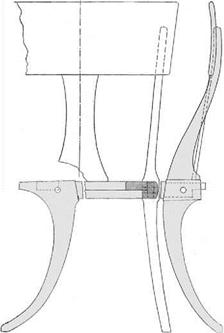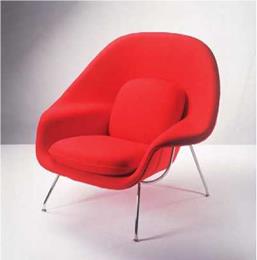The best of today’s furniture provides for many human needs and desires, revealing the latest conceptions of function and social use. In this chapter, function and social use are interpreted broadly to include matters of comfort, performance, intended purpose, activity, structural integrity, spatial order, and aesthetics (Figures 2.1 and 2.2). Primary categories of function and social use include:
■ Human body supports
■ Activities
■ Containing
■ 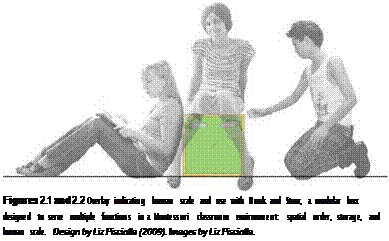
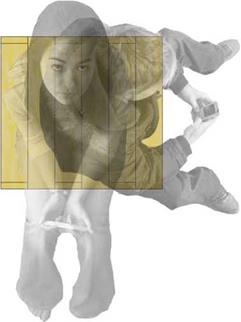 Defining space
Defining space
human body Supports
Sitting, Working, Resting, and Sleeping
Furniture supports the human body in the course of sitting, reading, dining, working, resting, and sleeping. Many people spend 75 percent of their entire day (from dawn to dusk) in or on some type of human body support. It is important to consider the spatial and temporal context in which furniture is used, and how it is used. How is the human body supported? For how long—how frequently, and in what social setting? Activities, body movement, and body posture are important to consider in design. Reading a newspaper requires a different posture from typing on a keypad, yet both are done while being seated. While some people hold books and folded newspapers in their hands; others read with the pages lying flat on a table.
Beds, benches, bus, car, and plane seats, chairs, couches, futons, hammocks, inflated therapy balls, mattresses, rockers, sofas, stools, and wheelchairs are some of the many furniture pieces designed to support the human body for up to 15 hours out of every 24-hour cycle (Figure 2.3). At a minimum, human body supports should enable five conditions:
■ Body movement
■ Support the weight of the body as evenly as possible
■ Maintain the natural curvature of the spine when standing while being seated (lumbar lordosis)
■ Avoid inward compression of the lower vertebrae of the spine (kyphosis)
■ Minimize uncomfortable pressure points
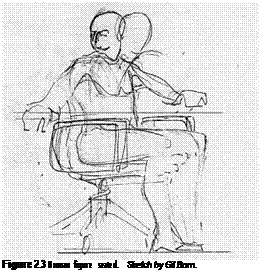 |
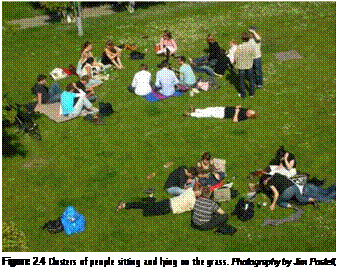 |
Conventionally, furniture serves to keep people and activities off the ground. Even sleeping bags and picnic blankets offer some degree of separation from the moisture, dirt, and temperature of the ground. But when the grass is warm and dry and the ground is clean, either can be a wonderful place to sit, rest, or sleep (Figure 2.4). Before we focus on
furnishings that support the body for various purposes above the ground, consider how people enjoy sitting, resting, working, and sleeping on the ground.
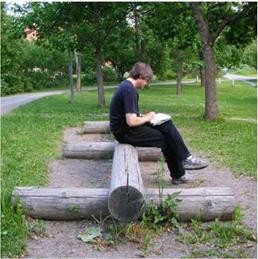 Man-made body supports include elevated platforms and raised surfaces used for sitting and resting. Backless benches made from logs, retaining walls, and steps can support a wide range of people and activities. These furnishings are often site-dependent, incorporated through their size, location, orientation, and surface articulation with the surrounding landscape (Figure 2.5).
Man-made body supports include elevated platforms and raised surfaces used for sitting and resting. Backless benches made from logs, retaining walls, and steps can support a wide range of people and activities. These furnishings are often site-dependent, incorporated through their size, location, orientation, and surface articulation with the surrounding landscape (Figure 2.5).
Stools are considered the oldest portable human body support.
The three – and four-legged stools that existed in ancient Egypt remain a popular furniture type today. Consider the similarities and differences in the form, materials, and fabrication of the hand-worked three-legged Egyptian stool in Figure 2.6 and the
laminated sauna stool designed by Antti Nurmesniemi in Figure
. . і і і і і. Figure 2.5 Sitting on a log bench. Photography by Jim
2.7. In both cases, the splayed three-leg support offers effective posten 2006
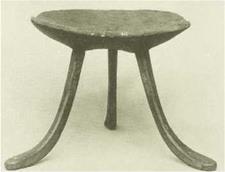 and efficient support to handle both vertical loads and lateral forces. The sauna stool gives functional expression to the detail between leg and seat pan, and the oil-concentrated teak leg supports work well within the changing moist and humid conditions of a sauna.
and efficient support to handle both vertical loads and lateral forces. The sauna stool gives functional expression to the detail between leg and seat pan, and the oil-concentrated teak leg supports work well within the changing moist and humid conditions of a sauna.
Chairs can be thought of as stools with backs. Backs give spatial orientation and provide lateral support for sitting. Backs can also indicate social order. The Greek klismos chair has been referred to as "the chair with a back"1 because up to 500 BCE, chairs with backs expressed social significance through their use and were considered thrones. Throughout history, chairs have denoted social status through their form, size, material, and placement. Figure 2.6 Egyptian-grown tmd bitmd-ranred stod
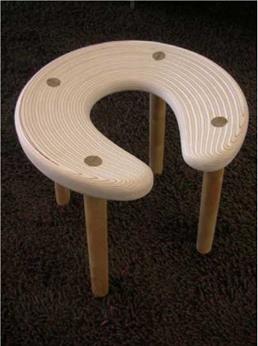 with splayed legs, ca. 1560 BCE. Photography courtesy of John Stork.
with splayed legs, ca. 1560 BCE. Photography courtesy of John Stork.
Figure 2.7 Sauna stool designed by Antti Nurmesniemi (1952), fabricated by Vuokko. Laminated birch ply seat pan with turned, teak leg supports. 17 inches wide; 16 inches deep; 17 inches high (43 cm wide; 40.5 cm deep; 43 cm high). Photography by Jim Postell, 2006.
The verb "to sit" signifies holding a position of power in many languages. The terms and phrases chairman, to chair a meeting, and seat of learning all refer to social status. Chairs often distinguish between individuals being served and those serving others. Those who stood generally served those who sat (Figure 2.8). Sitting postures also relate to regional traditions and social circumstances as much as they respond to a desire of comfort or need for support.
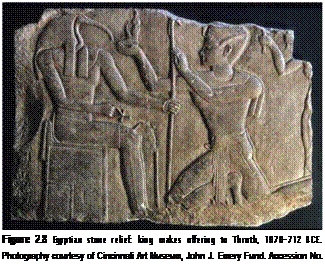 The klismos chair gave dignity and poise to a broader spectrum of users, underscoring an emerging social and gender equity within the Greek democracy. The drawing overlay of the klismos chair in Figure 2.9 is based on an interpolation of surviving pottery and sculptural relief.2
The klismos chair gave dignity and poise to a broader spectrum of users, underscoring an emerging social and gender equity within the Greek democracy. The drawing overlay of the klismos chair in Figure 2.9 is based on an interpolation of surviving pottery and sculptural relief.2
It is a challenge to integrate formal aspects of composition, material properties, fabrication techniques, and functional use in the conception of furniture, but the best designers do so. Consider the upholstered foam over a molded plastic shell in Eero Saarinen’s Womb chair (Figure 2.10) or Grete Jalk’s folded and laminated plywood Easy chair (Figure 2.11). These chairs resulted from material exploration and rigorous design iteration. The Womb chair offers an upholstered refuge and a relaxed posture for the user. It was originally commissioned by Florence Knoll, who wanted "a chair that was like a basket full of pillows . . . something [she] could curl up in."3 Both Saarinen and Jalk were able to transform the limitations of specific materials and processes of fabrication into furnishings that are structurally sound, comfortable, and beautiful.

|
|
|
|

